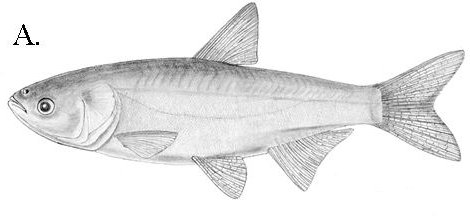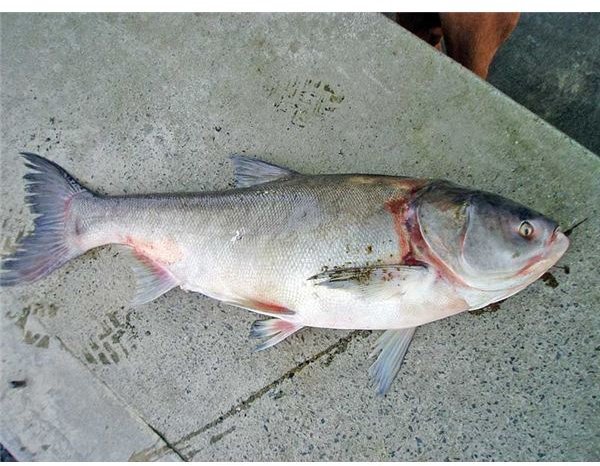Attack of the Asian Carp in the US
The term “Asian carp” can refer to several fish species that mostly originated from China. Since their introduction into the United States, four types of Asian carp have become the most troublesome throughout America. They are known as the common carp, grass carp, silver carp, and bighead carp. Of the four, the silver and bighead carp have posed the most problems in American rivers and streams.
Even though these carp naturally travel upstream, many individuals are fearful that these fish will continue to new locations such as the Great Lakes. Authorities are now taking legal procedures in order to stop the invasion of Asian carp such blocking artificial waterways such as the Chicago Sanitary and Ship Canal. Although certain species such as bighead carp have been seen in the Great Lakes, it is too early to tell if they have adapted.
The “Invasiveness” of Asian Carp
What makes Asian carp such as the silver and bighead so dangerous? Many might conclude that fish species would simply share an ecosystem and feed on the same resources. On paper, these considerations may seem fair, however fish species such as silver and bighead carp have characteristics that put them at an advantage against native species.
For example, rather than preying on other fish, the bighead and silver instead focus on eating algae and plankton that are under the river waters. Furthermore, these fish produce very quickly and with their hungry lifestyle can eat as much as one-fifth of their weight every day. With an insatiable amount of hunger, Asian carp species are an average of 50 pounds with others can over 100 pounds over their lifetime. Furthermore, these types average from a length of 2-3 feet.
With an innumerable amount of numbers and a well-fed atmosphere, silver and bighead carp can endanger other fish species that survive on plankton and algae. If kept unchecked, the silver and bighead carp may endanger the ecosystem by eating too much and pushing out the native fish species due to the lack of food.
Devastating Environmental and Economic Effects
Besides endangering the ecosystem, species such as the silver carp can endanger individuals navigating rivers and waterways.

The silver carp is known for its nickname as the “jumping fish” or the “flying fish.” It acquired this nickname because these 20-40 pound monsters can easily jump 10 feet when being startled by boaters. It might be pleasant to see a silver carp jumping out of the water next to a boat; however, it can also be downright dangerous when silver carp become 20-40 pound projectiles for boaters.
What about the economic effects of Asian carp? Since Asian carp reproduce fairly quickly, it is evident that most rivers and waterways along the Mississippi and Illinois are mostly populated by silver and bighead carp. Even though these numbers could potentially feed multitudes of people, Asian carp are disregarded for their taste in the United States–and are often ignored by consumers. Since American consumers usually prefer native fish species in these waterways, it would significantly hurt the fishing market and consumers themselves if native fish species were ousted by Asian carp.
Lawsuits and Proposed Solutions
Certain lawmakers have been frantic in trying to impede the progress of Asian carp as they progress through the Mississippi and Illinois waterways. Many individuals are concerned that the silver and bighead species may devastate the Great Lakes if they are able to establish a spawning ground. With these concerns, certain states such as Wisconsin and Michigan have begun trying to legally prevent Asian carp from entering the Great Lakes. Several solutions have been offered such as a proposed attempt to artificially keep the fish out such as shutting down the Chicago Sanitary and Ship Canal.
Critics have declared that even though this measure would end the threat of Asian carp, it would end up hurting trade with companies who thrive on shipping through the waterway. Even with this assertion, many American states surrounding the Great Lakes as well as Canada’s province Ontario have tried to shut down the canal by appealing to the Supreme Court. Other attempts have been made, such as implementing an electrical fence that would prevent Asian carp from jumping up the Chicago Sanitary and Ship Canal. Even with this attempt, advocates believe that further steps must be taken in order to stop the Asian carp.
New methods have been hypothesized in ending the threat of Asian carp with examples ranging from the government as well as new barriers that may be set up. Even today, Asian carp are still spreading throughout the United States including the recent outbreak in Louisiana. Even with these methods, future planning must be taken in order to stop the threat of Asian carp in the US–otherwise they may risk endangering new ecosystems and native animal species.
References
Sources:
- Asian Carp Control. “Background and Threat.” https://asiancarp.org/background-threat/
- The National Invasive Species Council. “Invasive Species Definition Clarification and Guidance White Paper. ISAC. https://www.invasivespeciesinfo.gov/docs/council/isacdef.pdf
- Upper Midwest Environmental Sciences Center. “Asian Carp.” https://www.umesc.usgs.gov/invasive_species/asian_carp.html
- Walsh, Brian. “Asian Carp in the Great Lakes? This Means War!” Time. https://www.time.com/time/health/article/0,8599,1962108,00.html
Images:
- Bighead Carp by Hunadam under CC BY-SA 3.0
- Hypophthalmichthys molitrix adult by Tdk under CC BY-SA 3.0
